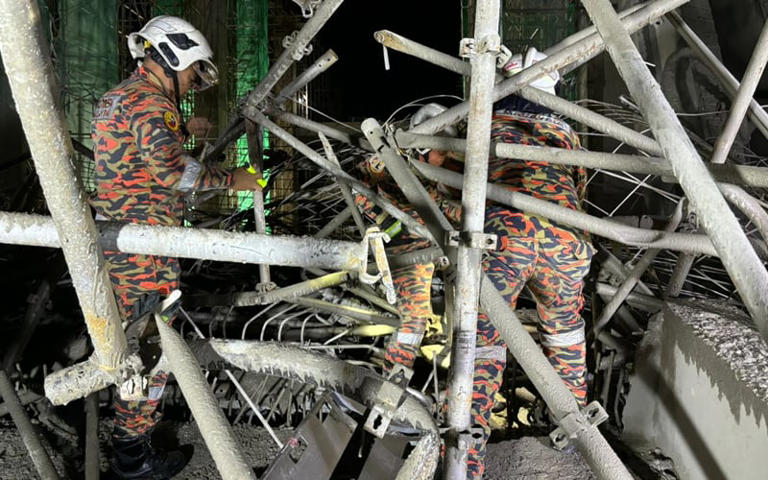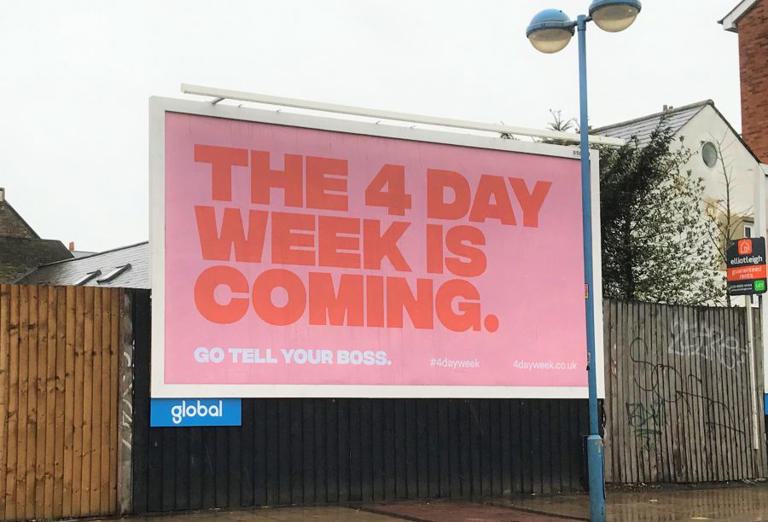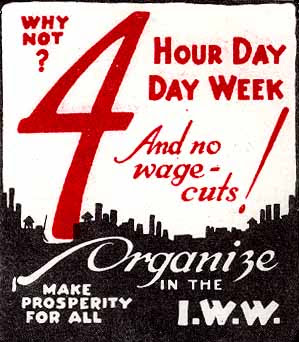Story by Predeep Nambiar • Free Malaysia Today

Fire and rescue department personnel trying to locate the 12 victims. (JBPM pic)© Provided by Free Malaysia Today
GEORGE TOWN: At least one person has died and 12 more are believed to have been buried alive beneath construction debris after a partially built building collapsed tonight.
A fire and rescue department official said the incident occurred near the Fisheries Development Board office in Batu Maung around 10pm.
Rescue teams from three fire stations are currently at the scene trying to locate the victims, the official said.
“We can’t say anything for certain on the status of the people trapped at the moment,” the official said when contacted.
According to the official, a total of 18 workers, all Bangladeshi nationals, were first reported to be buried under the rubble.
As of 11.55pm, five people had been rescued, with three of them pulled out from the rubble by other construction workers on site.
Some 12 workers are still missing. One worker was reported to have been killed instantly.
Penang has been hit by a series of construction disasters over the years in view of the large number of development projects being carried out on the island.
In 2017, a 10m hill slope collapsed adjacent to a condominium construction site in Tanjung Bungah, resulting in the death of 11 people.
Subsequently, in 2018, nine construction workers lost their lives in a landslide at a bypass project near Air Itam.
In 2019, a retaining wall collapsed at a resort on Jalan Batu Ferringhi, claiming the lives of four construction workers.
Becky Jacobs, Green Bay Press-Gazette
Tue, November 28, 2023
GREEN BAY — Federal inspectors found violations and proposed fines against two companies after a construction worker died in June at Lambeau Field.
The U.S. Department of Labor's Occupational Safety and Health Administration issued citations to Miron Construction Co., Inc. and Mavid Construction earlier this month. USA TODAY NETWORK-Wisconsin requested and received the documents from the agency on Monday.
Earlier this year, crews replaced the two large video boards at Lambeau's north and south ends and renovated concession stands throughout the stadium.
OSHA began its investigation after 27-year-old Joshua Shaw, of Clintonville, was injured June 15 while working at Lambeau Field. He died two days later.
Shaw was "one of our valued carpenters" at Mavid Construction, Zoar Fulwilder, the Green Bay company's owner, said in a statement to the Green Bay Press-Gazette Tuesday. Shaw was a second-generation employee, and his father and brother also work at Mavid Construction, according to the statement.
"As a family-owned company, this loss has truly impacted us all," Fulwilder said. "We continue to support both the Shaw family and our employees. Mavid Construction is working with the Shaw family to carry on Josh’s legacy through a scholarship that will benefit future generations interested in pursuing a career in the construction industry."
Fulwilder added, "We have been in communication with OSHA since the incident and are committed to safety on all of our project sites."
Miron Construction, headquartered in Neenah, was the general contractor on the project.
"We have been working with the proper officials and will continue following their established and trusted processes as we are committed to providing safe and productive project sites for all our team members," the company said in a statement Tuesday to the Press-Gazette. "Miron has a longstanding rapport with OSHA and we expect that to continue."

Construction crews work to expand the video boards at Lambeau Field on April 4, 2023, in Green Bay, Wis. A construction worker was fatally injured at the stadium June 15. Earlier this month, OSHA issued citations and proposed penalties against Mavid Construction and Miron Construction.
Carpenter struck by dumbwaiter car, OSHA says
On June 15, Shaw "was conducting framing operations inside the newly expanded" north end zone scoreboard, according to OSHA. The scoreboard has six levels and a roof section, and Shaw was working on the first level.
Around 10 a.m., Shaw leaned over a guardrail around the hoistway where the dumbwaiter car traveled to talk with another employee "about needing equipment," the agency said. Shaw asked for a table saw to be loaded on the dumbwaiter and lifted to the scoreboard's first level from the lower concourse, according to OSHA.
When the two finished talking, the other employee turned to walk away from the opening, OSHA said. As Shaw leaned over the guardrail, the dumbwaiter car, operated by pendant, came down from the upper levels of the scoreboard and struck him in the back of the head, according to the agency.
"The dumbwaiter car continued to descend," OSHA said, and trapped Shaw.
Emergency crews responded to the scene, and firefighters extricated Shaw within seven minutes. He was taken to St. Vincent Hospital in Green Bay.
OSHA opened inspection cases involving Mavid and Miron that month.
OSHA issues fine of more than $15,000 to both businesses
Federal inspectors found two violations for each of the companies, according to letters that OSHA sent the businesses, dated Nov. 15. The agency proposed a penalty of $15,626 for Mavid and $18,976 for Miron.
According to OSHA, the companies' employees and subcontractors "were exposed to pinch-point hazards associated with the operation of an electric dumbwaiter when the employer did not ensure the controls for the lift had been tagged or locked to render the lift inoperable."
The companies also "did not ensure that employees and contractors were qualified by training or experience prior to allowing them to operate the lifting device," the agency said, among other issues.
Mavid and Miron each have 15 business days after receiving the citations and penalties to comply, request an informal conference with OSHA’s area director or contest the findings before the independent Occupational Safety and Health Review Commission.
Reporter Doug Schneider contributed to this story.
Reach Becky Jacobs at bjacobs@gannett.com or 920-993-7117. Follow her on Twitter at @ruthyjacobs.
This article originally appeared on Appleton Post-Crescent: OSHA cites Mavid, Miron related to carpenter's death at Lambeau Field
BANGLADESH
Making workplace safe for construction workers

Over the past few years, Bangladesh has experienced a surge in the construction industry as our rapid population growth has necessitated adequate housing for everyone. And that's not all—the government is also implementing dozens of massive projects to improve the country's infrastructure.
In response to these demands, Bangladesh has seen a considerable contribution to its GDP coming from the construction sector, which reflects the industry's significance. According to the data of Bangladesh Bureau of Statistics (BBS), construction added Tk 3.7 lakh crore to the GDP in 2022. This is an increase over the sum for the year 2021—Tk 3.2 lakh crore.
The Labour Force Survey 2017-18 of BBS reveals that the construction industry provides employment for more than 3.4 million individuals or approximately 5.6 percent of the nation's total workforce. But in this bustling panorama of the construction sector, there lies a shadow that often goes unnoticed: the frightening rate of accidents and fatalities suffered by construction workers.
According to a report published by non-governmental organisation Safety and Rights Society (SRS), over 700 fatalities of construction workers, as reported in newspapers, happened across the country between 2017 and 2021. This equates to an annual death toll of 143, on average. Because many fatalities and accidents occur on construction sites in our country every year, the vast majority of them never make it into official records or newspaper headlines.
Based on the report by SRS, in 2021, construction accidents ranked second in terms of workplace fatalities. The transportation sector witnessed the highest deaths among all workplaces, while the manufacturing sector ranked third. While discussions about reducing fatalities have consistently focused on the manufacturing and transportation sectors, the high number of deaths in the construction industry does not receive the attention it deserves.
When it comes to the cause of death in the construction industry, according to the SRS report, between 2017 and 2021, the most common cause of death was a fall from height (245 people), followed by electrocution (223 people), inhaling poisonous gas or suffocation (91 people), wall/mud/roof/stair/earth collapse (78 people), crushed by object (64 people), explosion (two people) and others (nine people). The data suggests that the considerable disregard for safety concerns by construction workers and owners of construction sites is the direct cause of the fatalities.
Safety precautions in construction sites are frequently ignored in Bangladesh since owners, contractors, and workers are often unwilling to ensure them because of carelessness and a lack of understanding, training, and knowledge. If we look at the causes of deaths mentioned above, we can see that the casualties caused by falling from a height, being electrocuted, and breathing in poisonous gas or suffocating could be easily reduced if those in charge of the construction site take some precautions or pay a little more attention to safety.
Some experts may bring up the issue of implementing the Bangladesh National Building Code, 2020 (BNBC), but doing so is not an easy task at the moment. Furthermore, without an efficient regulatory authority throughout the country, BNBC implementation will not be successful. Nevertheless, we cannot wait for such an authority to be established, because the death toll is increasing year after year. Along with pressing the government to establish a regulatory authority for BNBC, we must strive to raise awareness and disseminate knowledge and training among workers and construction site owners about the importance of using safety equipment and taking precautions.
Such awareness must be raised through the combined efforts of the public and private sectors, and worker rights organisations and relevant NGOs must take the initiative to do so. A great example of this can be seen in Bangladesh Legal Aid and Services Trust (BLAST), which has a long history of providing legal aid and assistance to workers. More recently, as part of the "Empowering Workers for Justice" initiative, BLAST has supported construction workers through a variety of initiatives, including raising awareness of construction workers' rights and responsibilities regarding safety and legal protection at workplaces. Such initiatives should be continued as well as broadened by strengthening affiliation with government and other organisations. I believe, with all of our efforts, we may be able to make significant headway to prevent fatalities and injuries from such avoidable causes.
Fahad Bin Siddique is research officer at Bangladesh Legal Aid and Services Trust (BLAST).
Views expressed in this article are the author's own.
Follow The Daily Star Opinion on Facebook for the latest opinions, commentaries and analyses by experts and professionals. To contribute your article or letter to The Daily Star Opinion, see our guidelines for submission.








:quality(70)/cloudfront-us-east-1.images.arcpublishing.com/archetype/J6TXMDQPOZGRHLMYA5M62QQYLI.jpg)
:quality(70)/cloudfront-us-east-1.images.arcpublishing.com/archetype/DLVFAH7IR5DFLHM5Z2774I7S5I.jpg)









